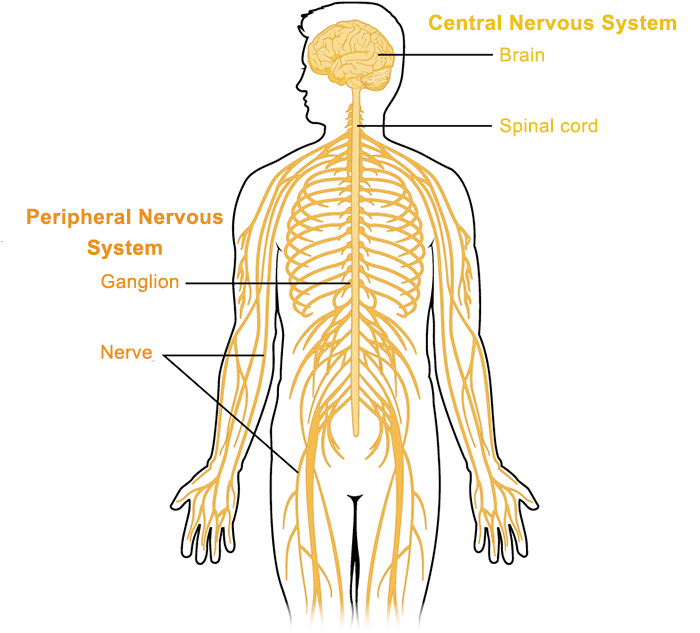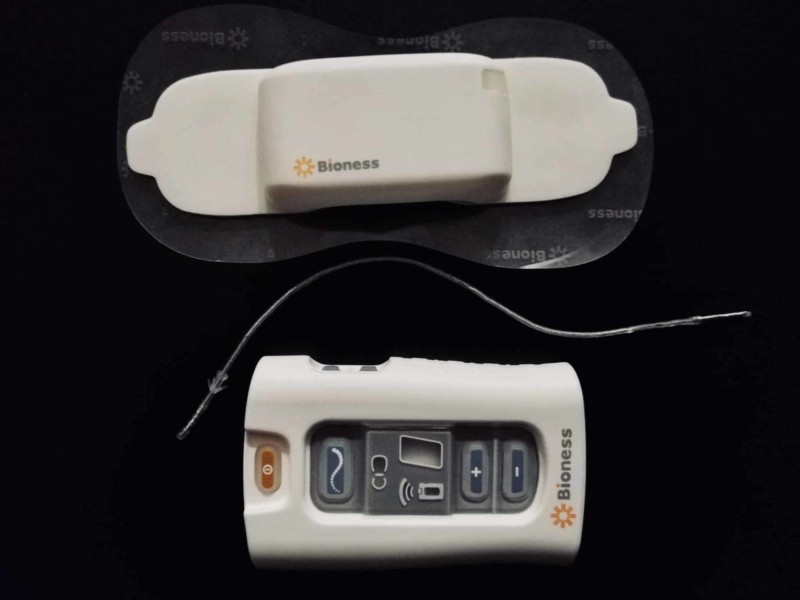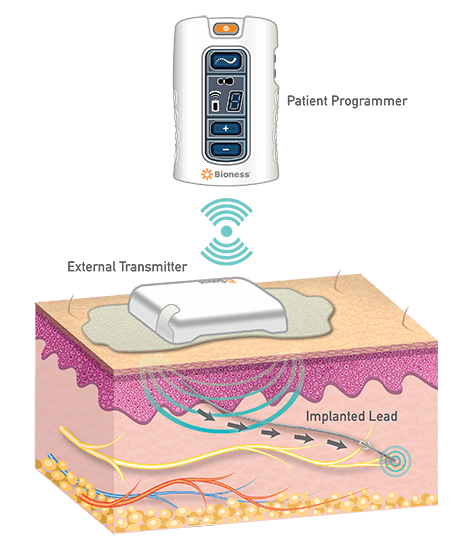PERIPHERAL NERVE STIMULATION IN PLANO, TX
CENTERS & INSTITUTES
Peripheral Nerve Stimulation
Neuropathy is just one of many nervous system disorders that can cause chronic, lifelong pain. More than 20 million Americans suffer from peripheral neuropathy according to the National Institute of Neurological Disorders. However, this number is probably much higher due to misdiagnosis. Misdiagnosis often happens because neuropathy can be mistaken for a variety of other chronic conditions. The pain that comes with neuropathy can be managed with many non-surgical methods, pain medications, herbal supplements, and other therapies. However, these are often temporary solutions. If you’re suffering from any kind of nerve damage or neurological pain, you may qualify for peripheral nerve stimulation which can provide long-term pain relief for many patients. For more information, call The Pain Relief Center at 214-709-1904.

What is a Peripheral Nerve?
Types of Peripheral Nerves
Sensory Nerves
Motor Nerves
Autonomic Nerves
What is Peripheral Nerve Stimulation (PNS) and How Does It Work?
PNS Device Components
- Battery
- Super slim wire with electrodes for delivering pulses to the peripheral nerve
- Remote which allows a patient to control the device settings

How is the PNS Device Inserted?
How Long Does it Take for the PNS Implant to Start Working?
How Long Does the PNS Implant Last?
Qualifying for a PNS Implant
- The pain must be coming from a specific peripheral nerve, such as the ilioinguinal nerve or the pudendal nerve.
- Has the patient tried a less invasive procedure or treatment before? Oral medications such as gabapentin or pregabalin, physical therapy, injections, and nerve blocks can relieve pain.
- Is an untreated psychological disorder affecting peripheral nerve pain? If a patient hasn’t previously received a psychological evaluation, a doctor may recommend this first to rule out anxiety and personality disorders.
Common Causes of Neuropathic Pain
- Being an alcoholic
- Long-term smoking
- Diabetes
- High blood pressure
- Issues with facial nerves
- HIV or AIDS
- Stroke, Parkinson’s disease, multiple sclerosis, or other central nervous system disorders
- Complex regional pain syndrome
- Chemotherapy or radiation therapy
- Phantom pain from amputations
- Compression or inflammation of spinal nerves
- Nerve compression due to tumors
- Physical trauma by car accidents, falls, sports injuries, etc.
- Blood clotting or other blood vessel disorders
Common Symptoms of Neuropathic Pain
- Sudden bouts of shooting, burning pain. Some patients describe it as “electric shock” pain.
- Tingling and numbness
- Pain from things that aren’t painful to the average person, such as cold temperatures or any kind of gentle pressure on the skin. Doctors call this condition allodynia.
- Excessive pain from things like super-hot temperatures, pinpricks, cuts, scrapes, etc. Doctors call this condition hyperalgesia.
- Insomnia
- Psychological distress due to chronic pain
- Muscle weakness or twitching
The Difference Between Peripheral Nerve Stimulation and Spinal Cord Stimulation (SCS)
The Difference Between Peripheral Nerve Stimulation and Transcutaneous Electrical Nerve Stimulation (TENS)
Conditions That Peripheral Nerve Stimulation Can Treat
- Complex regional pain syndrome
- Headaches including episodic cluster headaches, chronic migraines, occipital neuralgia, and more
- Constant pain in the lower abdomen and upper thigh, known as ilioinguinal neuralgia
- Constant pain in the chest, known as intercostal neuralgia
- General pain in the face called trigeminal neuralgia
- Pain following a thoracotomy incision
- Burning pain caused by shingles
- Phantom limb pain caused by an amputation
- A general nerve injury
- Chronic pain after a hernia or knee surgery
- Pain in the outer thigh area, called lateral femoral cutaneous neuropathy

Call The Pain Relief Center Today
More Conditions
- Achilles Tendinitis
- Allergies
- Arthritis
- Back Pain & Low Back Pain
- Bulging Disc
- Car Accident Injuries
- Carpal Tunnel Syndrome
- Cervicogenic Headache
- Chronic Pain
- Cluster Headache
- Degenerative Disc Disease
- Fibromyalgia
- Foot Pain
- Interstitial Cystitis
- Joint Pain
- Knee Pain
- Low Estrogen
- Neck Pain
- Occipital Neuralgia
- Osteoarthritis
- Osteoporosis
- Piriformis Syndrome
- Plantar Fasciitis
- Reflex Sympathetic Dystrophy (RSD)
- Rheumatoid Arthritis
- Rotator Cuff Tear
- Sacroiliitis Pain
- Sciatica
- Scoliosis
- Shingles
- Shoulder Pain
- Spinal Pain
- Spinal Stenosis
- Tension Headache
- Thoracic Pain
- TMJ
- Trigeminal Neuralgia

